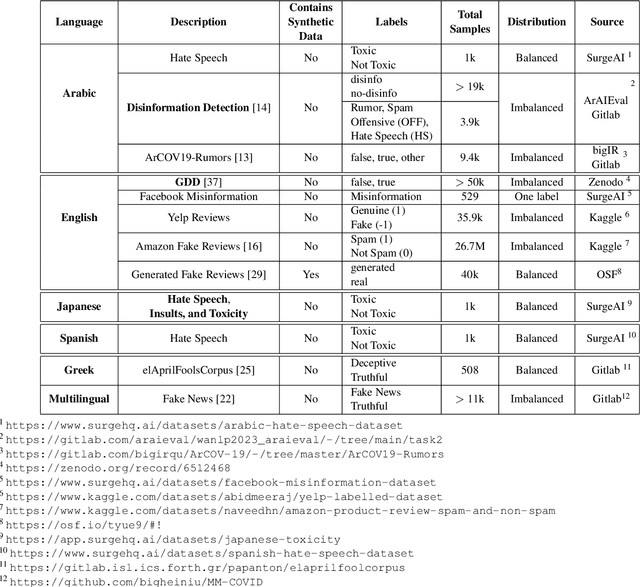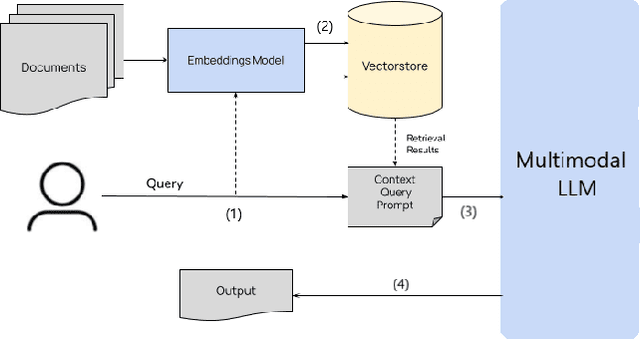Fatima Zahra Qachfar
A Roadmap for Multilingual, Multimodal Domain Independent Deception Detection
May 07, 2024

Abstract:Deception, a prevalent aspect of human communication, has undergone a significant transformation in the digital age. With the globalization of online interactions, individuals are communicating in multiple languages and mixing languages on social media, with varied data becoming available in each language and dialect. At the same time, the techniques for detecting deception are similar across the board. Recent studies have shown the possibility of the existence of universal linguistic cues to deception across domains within the English language; however, the existence of such cues in other languages remains unknown. Furthermore, the practical task of deception detection in low-resource languages is not a well-studied problem due to the lack of labeled data. Another dimension of deception is multimodality. For example, a picture with an altered caption in fake news or disinformation may exist. This paper calls for a comprehensive investigation into the complexities of deceptive language across linguistic boundaries and modalities within the realm of computer security and natural language processing and the possibility of using multilingual transformer models and labeled data in various languages to universally address the task of deception detection.
* 6 pages, 1 figure, shorter version in SIAM International Conference on Data Mining (SDM) 2024
Homograph Attacks on Maghreb Sentiment Analyzers
Feb 05, 2024Abstract:We examine the impact of homograph attacks on the Sentiment Analysis (SA) task of different Arabic dialects from the Maghreb North-African countries. Homograph attacks result in a 65.3% decrease in transformer classification from an F1-score of 0.95 to 0.33 when data is written in "Arabizi". The goal of this study is to highlight LLMs weaknesses' and to prioritize ethical and responsible Machine Learning.
 Add to Chrome
Add to Chrome Add to Firefox
Add to Firefox Add to Edge
Add to Edge